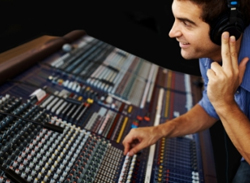One of the major differences I’ve seen between an aspiring producer and an established producer is simple playlist (take) management. Great producers will usually have a very clean session in regard to organization and take management.
Gizmos
Technology is great. It allows us to do things that have never been done before, all in the comfort of our own homes. But when is it a hinderance? When do we become a prisoner of all the possibilities? When do we start to drown in endless options?
Established producers often have a lot of clarity within their sessions. They’re not concerned with countless possibilities, rather the best option.
This means when it comes to comping tracks and saving takes, decisions are made quickly.
Saving 20 takes per part may seem like a reasonable idea to many. What if you want a different variation on the part? Not sure the timing is locked? Not sure which take has the best tuning? What if? What if? What if?
Too many “what if’s” lead to a muddy production. It’s important to make decisions. Clarity throughout the process is important. Firstly, because it affects the performances.
A guitar chord that’s off is going to trigger the bass note to be off and then the percussionist has a hard time locking in. Before long, you have a session where the whole band is a little shaky. Not making decisive decisions can create a spiral effect on the stability of the production.
Momentary Lapse Of Reason
There is also the memory lapse effect. You record a bunch of takes and while you’re working, everything seems clear in your mind: Take 12 had a good bit, take 15 was mostly good, but you want to grab the beginning from take 4.
If you put the song down for a few days and come back to the session it’s going to be hard to remember the nuances between takes.
Commit. If it’s still not good enough, re-track it. At this point, you’re better off getting a single take then a patched edit for the sake of feel. I’m always in favor of replaying the part rather than extensive edits. It will take the same amount of time and the full take will still sound better.
Worm Hole
Aspiring producers/musicians get caught in the trap of playing too much and not listening. I like to set a rule of stopping after 4 takes and giving a really good listen. Don’t set record to do an endless loop. Loop recording means you’re not listening and most likely spacing out at times.
Perspective
It’s hard to hear the music the way it really sounds while you’re playing. This is another reason why you need to stop and listen as often as you can. If you’re the producer and player your perspective is biased.
When you stop, put your instrument down and trust your ears. Listen, make notes, and re-take. Don’t be noodling on your instrument while listening. This is the only way to make really fine adjustments. It may seem like it’s the long approach, but in reality, it will save you time.





















